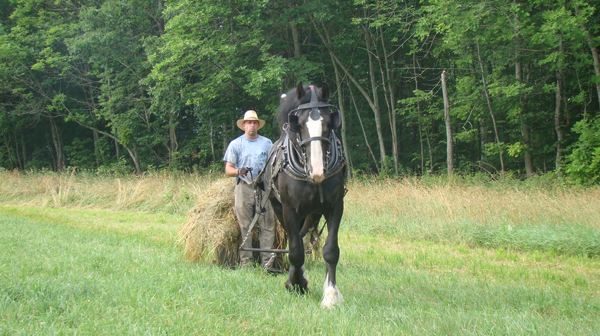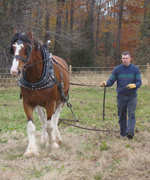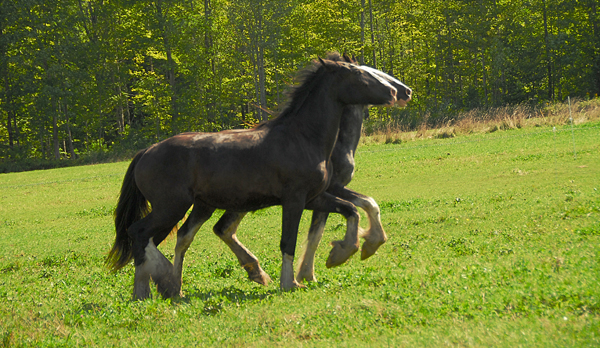Working Horses: Four Corner Communications

Paul Merrill drives a young Shire at Troika Drafts in Hebron, Maine

A young horse or one learning a new skill will often communicate acceptance or confusion with their body langage, while as humans we'll often communicate the objective of our training with our lines and words.
Using driving lines and words to communicate with our drafts feels more natural to most humans, especially when just learning to drive. However, body language and spirit are the more dominant methods of communication for our equine counterparts. Is it any wonder that some folks have issues with their horses?
If we look to a core behavior of the horse, fight or flight, it's easy to conclude that movement is a horse's natural reaction to a stimulus. We term horses that are fully numb to stimulus as "bombproof," but, in reality, the only bombproof horse is a dead horse. There is something somewhere on earth that will make any particular horse move regardless of how bombproof the owner or trainer insists the horse may be. In essence, the virtually bombproof horse is one who is fully tuned into its handler in all four methods of communication: lines, words, body language, and spirit. The horse and handler know every sound, movement or message that could occur between them, with reactions that are in perfect trust and harmony.

A concept that may help an aspiring driver at this stage is to think of the styles of communication with your horse as corners in a box. The corner of the lines is easy to discern. They are leather or synthetic straps that connect your hands to the horse's bit and communicate by controlling the horse's nose and head, and thus his body. Next there are words, which complement the use of the lines, or lack thereof, depending on the work and training level of the horse. These are the most defined and most easily identified corners of your box. The next two corners, those regarding body language and spirit, are much more abstract.

both the horse and the driver, chores around the farm are a combination of communicating with all four corners: lines, words, body language, and spirit.
Body language and spirit complement the use of lines and words for the advanced driver. While obedience and safety still dictate, realize there comes a time with mastered horsemanship when working and driving your draft will be more than just lines and words. Consider these changes a gift and a sign of maturity in your equine sensory skills. The new methods will take some getting used to, but once you accept and master them, your lines and words will actually become your secondary means of communication.

a horse for listening as a horse is programmed to listen. Equally is heartening to watch is a handler who fails to recognize the gift a horse offers when body language and spirit begin to enter the communication process. Work to master the four corners of communication, and you'll open an oasis of connections few drivers ever experience. And, more than ever, go forth and enjoy.
issue of Rural Heritage magazine.
